
 |
|
Marie Curie's Continuing Legacy A public that scarcely bothers to learn the names and achievements of contemporary scientists continues to feed on Marie Curie’s enduring fame. Recent decades have seen new popular and scholarly books and articles about Curie and several plays and movies based on her life. France has claimed her not only as an iconic female scientist, reinterring her with France’s immortals in the Panthéon, but also as a model immigrant, with a permanent exhibit in her honor in a Center for the History of Immigration in Paris. Her life story continues to spark controversies that bear on contemporary issues. 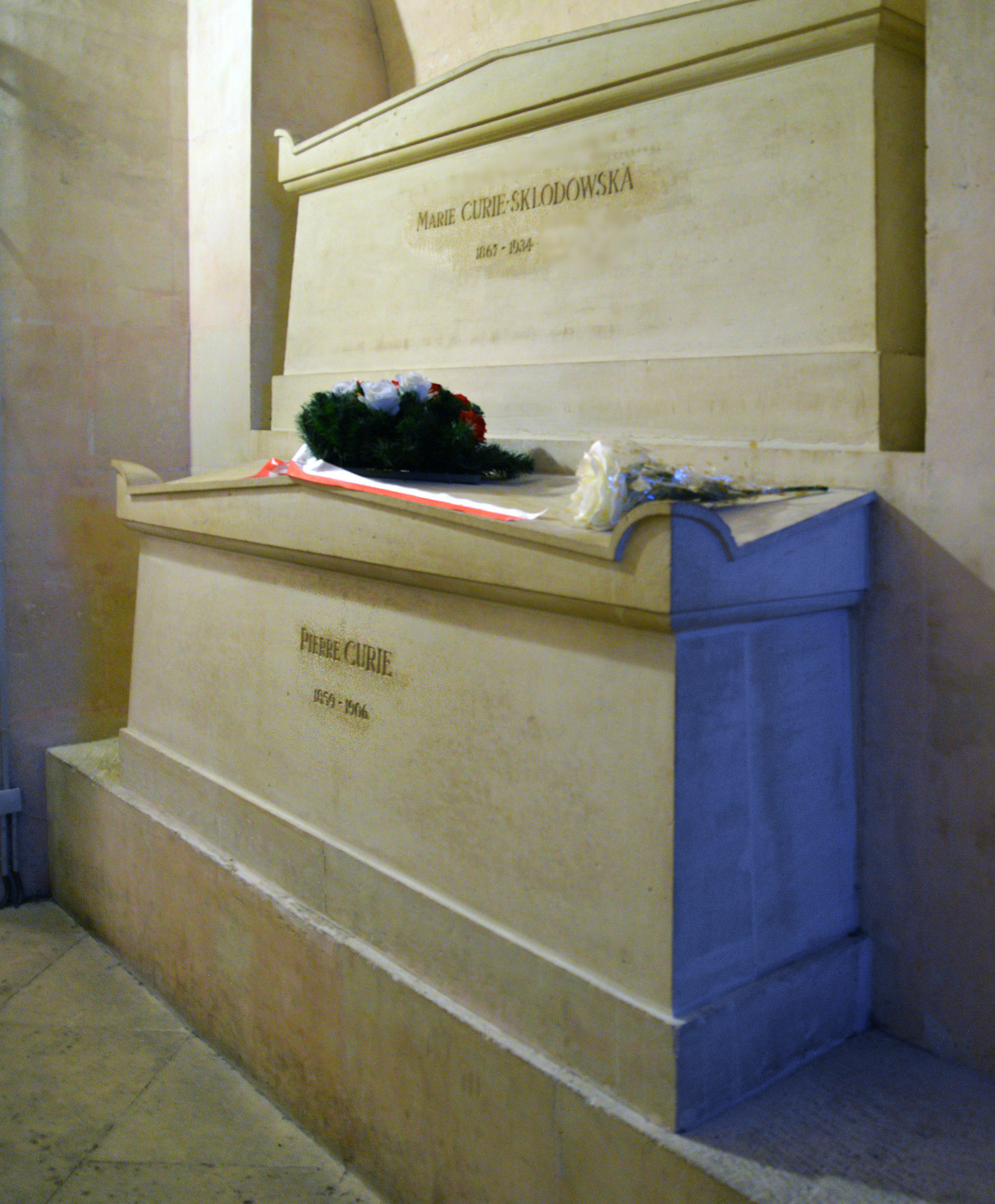
The graves of Marie and Pierre Curie in the Panthéon, Paris. Along with a number of biographies dedicated to Curie the 21st century has produced several histories of the science of radioactivity, with insights into Curie herself; an interesting collective biography of Curie’s nuclear family by a biographer of Einstein; and an intriguing artist’s book (a National Book Award finalist) about the marriage of Pierre and Marie Curie and the unforeseen and unintended negative consequences of their work. Entertainments on screen and stage included Radiance: The Passion of Marie Curie, written by actor Alan Alda, which dramatizes her depression following Pierre’s death in 1906 and her reaction to the press scandal over her later affair with Paul Langevin. At least two one-woman dramas have been devoted to Curie’s life and work: Susan Marie Frontczak’s Manya: A Living History of Marie Curie (available as a two-hour program intended for adults or a one-hour program for grades 4 through 12) and the PG-rated Rogue Scientist by Gabriel and Rebecca Morales. Theater audiences in New York City in late 2019 were able to see Lauren Gunderson’s “The Half-Life of Marie Curie,” about the relationship between Curie and the British scientist Hertha Ayrton, who helped Curie overcome her depression during the tabloid scandal following the exposure of her affair with married colleague Paul Langevin. Several docudramas and documentary films devoted to Curie’s life are available in French, but only one has been released in theaters in the United States and Britain. Marie Noelle’s Marie Curie: The Courage of Knowledge, like Alda’s play, covers the eight years between Curie’s two Nobel Prizes. 
Advertisement for a performance of Manya by Susan Marie Frontczak, who plays Marie Curie. Museums present the Curie story to an even more diverse audience. The National Center for the History of Immigration in Paris, which opened in 2007, included a display devoted to Curie. The display did not paper over the fact that, at several times in her career, opponents of the Polish-born scientist falsely represented her as Jewish in the belief it would discredit her. The Curie Museum, a historical museum located on Rue Pierre et Marie Curie in Paris, was set up shortly after Curie's death in 1934, in the same building where Curie worked for the last two decades of her life and where her daughter Irène and son-in-law Frédéric Joliot-Curie earned their Nobel Prize. Pierre and Marie Curie's other daughter, the award-winning writer Eve Curie Labouisse, left a bequest of one million dollars to the museum upon her death in 2007 at the age of 102. Refurbished and reopened in 2012, the museum includes Marie's chemistry laboratory and pieces of original equipment. Street artist C215 (born Christian Guémy) provided intricate stencil portraits of the Curies along the street façade of the museum. Especially popular with tourists in Paris is the Panthéon. When Curie was reinterred there next to Pierre in 1995, the event spurred a successful movement to award the honor of burial in the French national mausoleum to other deserving women, resulting in the interment of two heroines of the French Resistance in 2015 and of a third three years later. 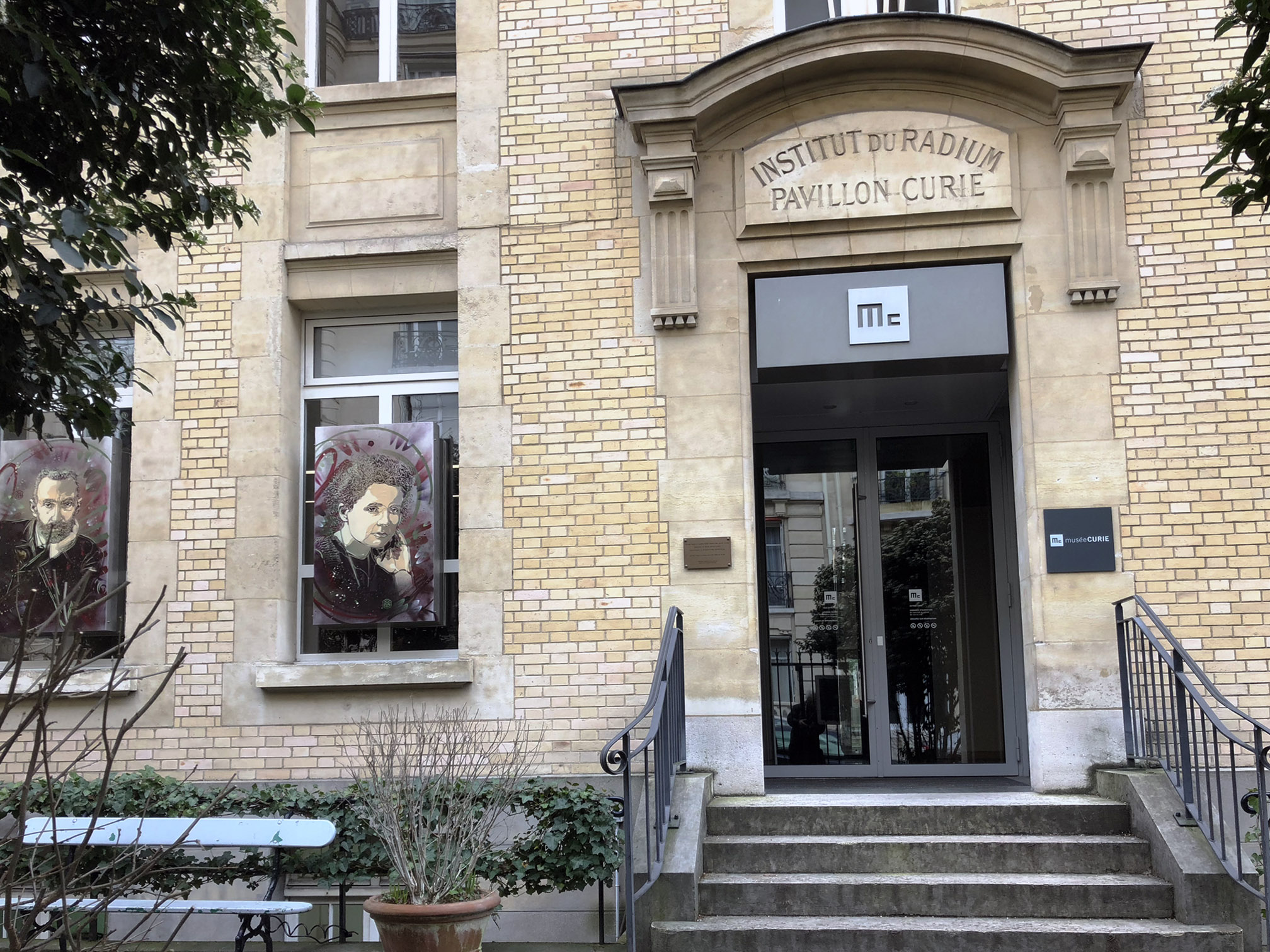
The Curie Museum occupies the ground floor of the Radium Institute at 1 Rue Pierre et Marie Curie, Paris. Anniversary years are a grand opportunity to reconsider the past and future, and the last decade of the 20th century and the first decades of the 21st century included a plethora of Curie-related anniversaries and commemorative events. In 1997 UNESCO honored the anniversary of Marie Curie’s 130th birthday with a commemorative medal. The medal was unveiled in 1998 in concert with the launch of UNESCO’s Future Scientists campaign. 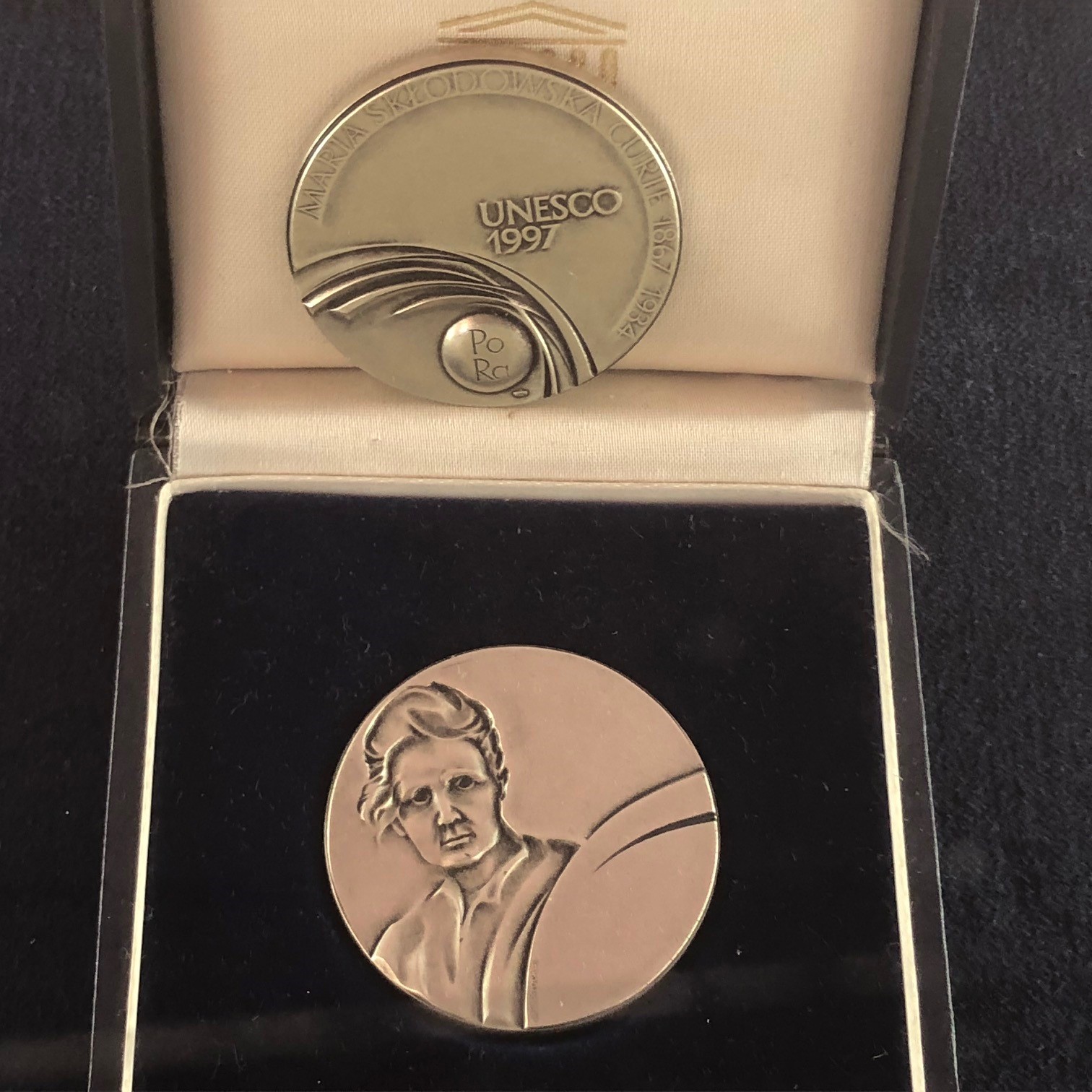
UNESCO's 1997 commemorative medal. When the United Nations designated 2011 as the International Year of Chemistry, the celebration was linked to the 100th anniversary year of Curie's Nobel Prize for Chemistry, with events honoring her held from Nagoya, Japan, to Quebec City, Canada. On November 7, 2011, Google honored Curie with a Doodle on what would have been her 144th birthday. 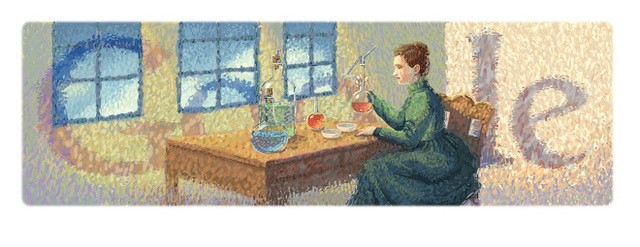
Google doodle in honor of Marie Curie's 144th Birthday and the International Year of Chemistry. The doodle was designed by Jennifer Horn and posted on November 7, 2011. Credit: Jennifer Horn. In June 2014, French president François Hollande paid a visit to Poland to attend celebrations marking the 25th anniversary of the first partly free elections in Poland after World War II which led to the overthrow of communism. In a highpoint of the celebration, Hollande, together with Polish president Bronislaw Komorowski, unveiled a new statue of Maria Sklodowska-Curie, holding a model of a polonium atom, which had been erected a short distance from the Maria Sklodowska-Curie Museum, located in the 18th-century apartment building where the future scientist was born in 1867. 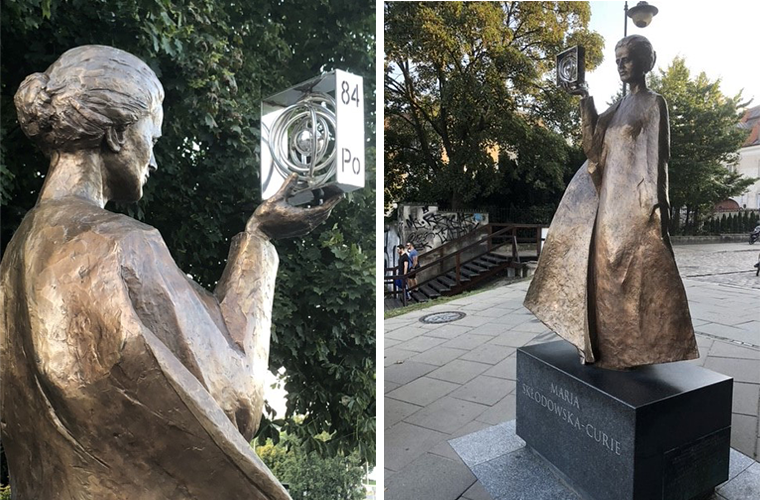
Statue of Maria Sklodowska-Curie. It was erected in 2014 outside the Maria Sklodowska-Curie Museum in Warsaw. In 2017, the Panthéon was the epicenter of many events marking perhaps the most significant of these anniversary spectaculars—the 150th anniversary, or sesquicentennial, of Curie's birth. The Panthéon itself drew many visitors with an exhibit on her life with documents, photos, videos, as well as a variety of events. Not to be outdone, Curie's birthplace celebrated her achievements for three days, capped by a birthday gala at the Warsaw University of Technology. 
The Panthéon with a banner announcing its exhibit on Marie Curie. The anniversary, however, resulted not only in such events exalting the achievements of the only female scientist whose name was a worldwide household word, but also in public criticism. One aspect of that criticism was foreshadowed in a Newsweek magazine article, issued on the birthday itself, with the provocative title, "Marie Curie Was Born 150 Years Ago and Women Are Still Fighting to Be Scientists." Another article issued the same day by Forbes magazine—"It's Marie Curie's 150th Birthday, and Her Legacy Deserved More Nuance"—challenged the sanctification of Curie's memory by urging readers to remember that she not only downplayed the danger of radioactivity to her own health but also to that of the researchers in her lab. The Forbes piece urged readers "not to focus on the temptingly romantic version of her story at the expense of a more clearheaded look at her legacy." Much to the delight of many who agreed with the challenge issued by Newsweek, the second decade of the 20th century yielded three women Nobel laureates in chemistry (Frances Arnold in 2018, and Emmanuelle Charpentier and Jennifer Doudna in 2020) and two in physics (Donna Strickland in 2018 and Andrea Ghez in 2020). Over the years between Curie's 1903 and 1911 honors and 2018, only three women had previously been selected for the chemistry award (Iréne Joliot-Curie in 1935, Dorothy Hodgkin in 1964, and Ada Yonath in 2009) and only one women physicist (Maria Goepert Mayer in 1963). This particular battle is not yet over, however. Curie's Impact in the 21st Century and Beyond Like so much of life during the Covid-19 pandemic of 2020 and 2021, the public's interest in Curie continues to be gratified, if often in slightly modified fashion. With theatres and cinemas closed to live audiences, Curie enthusiasts and others have taken to reading more, to being read to more, and to streaming films and series. They have been able to listen on Audible to Lauren Gunderson's previously mentioned The Half-Life of Marie Curie as well as Paula McClain's A Mind of Her Own, about the early years of Maria Sklodowska as a student in Paris. They have also been able to watch on their personal screens Marjane Satrapi's film Radioactive, released by Amazon Prime during the early days of the pandemic, based on the previously mentioned award-winning graphic novel by Lauren Redniss. New scholarly works continue to shed light on Marie Curie’s history and societal impact. Readers of Princeton historian Michael D. Gordin's Einstein in Bohemia, about the young scientist's time in Prague from April 1911 through July 1912, may be surprised to learn of the independent friendship Marie Curie shared with Einstein's ex-wife, Mileva Einstein-Marić. It is also a shock to realize that if, as Einstein prepared to leave Prague for Switzerland in summer 1912, he had met his death when run over by a runaway horse cart as Pierre Curie did in 1906, Einstein would not have been known to the world at large as perhaps the greatest physicist in history. More surprisingly, in Hilary Holladay’s biography of American feminist poet Adrienne Rich, released in 2020, readers unfamiliar with Rich's opus learn that her 1974 poem "Power" deals with Curie's denial of her and radiation sickness. The literature about Marie Curie has grown large enough that simply to list it all would require an entire book – such a reference guide was published by historian Marilyn Ogilvie in 2021. Marie Curie also continues to be honored by having various objects, funds, and awards named after her. Some are fairly light-hearted, such as a plane, a satellite, or even an asteroid. Others are continuing her legacy in science. The pandemic happily seems not to have impacted the granting of Marie Curie Fellowships, originally established in 1996 as Marie Curie Actions, and currently called Marie Sklodowska-Curie Actions (MSCA). These prestigious fellowships are sponsored by the European Commission to support career development of researchers. Marie Curie’s name graces various other awards, including the Marie Curie-Skłodowska Medal, awarded annually since 1996 by the Polish Chemical Society. The continuation of such awards also ensures continuing remembrance of the impactful scientist. 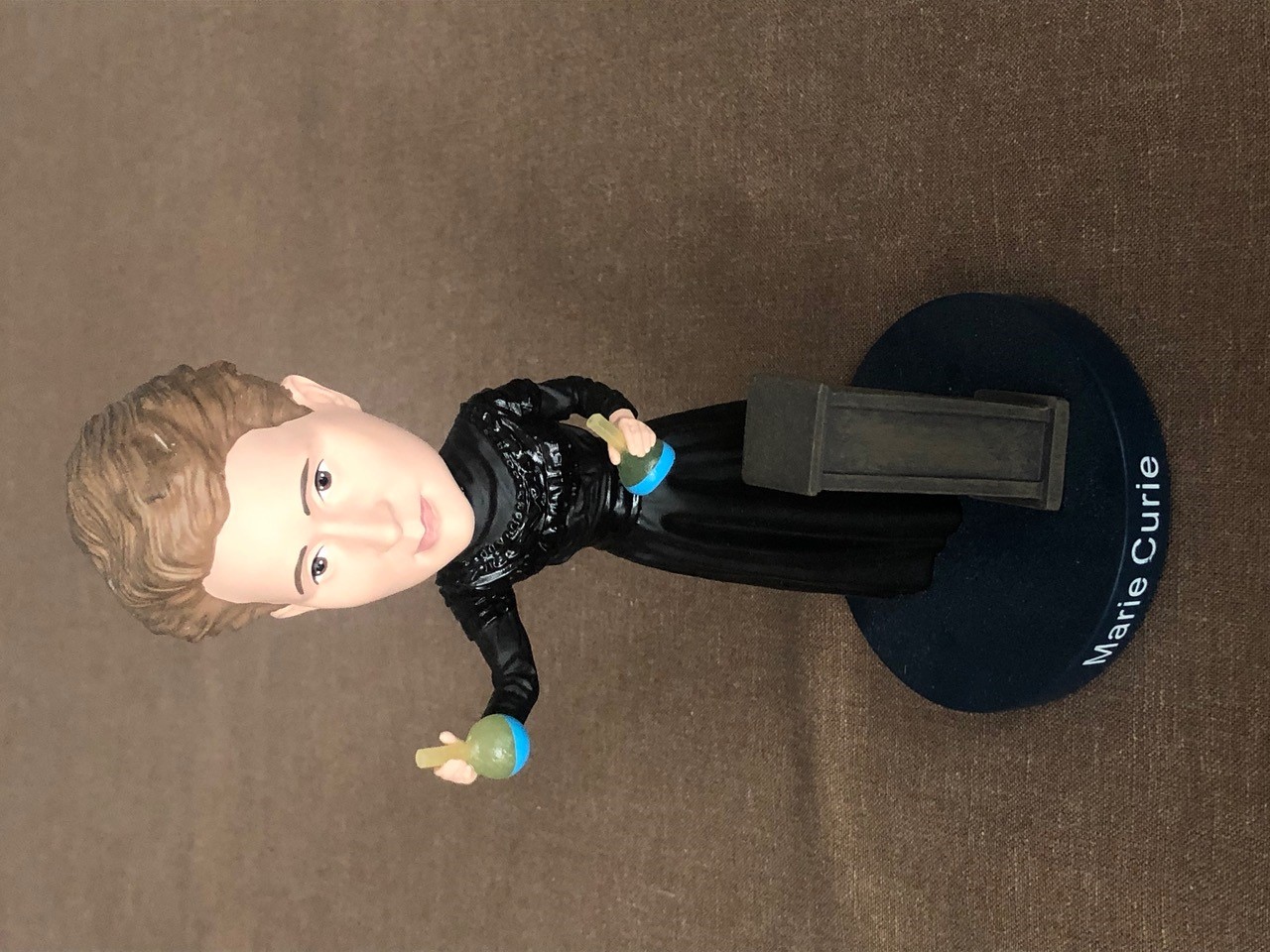
The iconic female scientist has also been immortalized in pop culture items like this bobblehead. Surely 2048 will witness sesquicentennial events to honor the anniversary of Curie’s discovery of polonium and radium. Who knows? Perhaps by then enough visitors will have found the Curie Museum by passing the Curie Institute’s world-renowned cancer treatment hospital on the Rue d’Ulm to demand a rethinking of Nobel Prize rules. If the lasting legacy of scientific discoveries is taken into account, why should the first person to win two Nobel Prizes during her lifetime not be given a third posthumously? Perhaps Curie may one day be granted a Nobel Prize for Physiology or Medicine for opening up a medical field that continues to help so many cancer patients. 
The Curie Institute’s hospital for treating cancer patients, Paris.
|